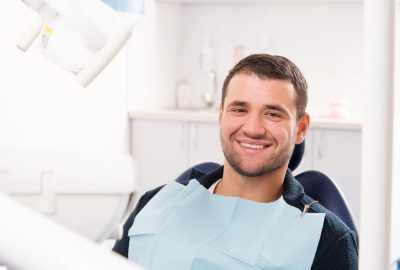Precision Dentistry
Rest assured that when you visit our office, our team uses the latest technology to enhance the quality and fit of your dental care. You can trust us to provide top-notch, reliable service.
Our practice uses high-power microscopes to enhance the precision of patient care.
By employing a microscope akin to that of an ophthalmologist, we are able to craft dental restorations with unparalleled accuracy. This level of precision is unattainable with the naked eye alone, and provides the highest level of quality and fit.
In addition to allowing precise, close-up work, the microscope directs a beam of light directly on the teeth, minimizing glare for you.
Many dentists use air-driven handpieces. While acceptable for many procedures, these air-powered tools all have a degree of discordance; they do not rotate perfectly smoothly.
For the most precise aspects of restorative procedures, we use electric handpieces. This results in extraordinarily precise interfaces between your tooth and your new restoration (dental crown, tooth veneer, or tooth filling). This will bring more comfort to you as well. With a more precise tool, there is less vibration and less noise.
Digital Imaging
At our clinic, we carefully choose when and which radiographs to take. We adhere to many guidelines to ensure the utmost care. Radiographs unveil tiny details beyond our natural eyesight, like cavities between teeth, bone levels, and general oral health insight. We can also inspect roots, nerves, diagnose cysts, tumors, signs of trauma and damage. Radiographs help us deliver the highest level of care to exceed your expectations.
Dental radiographs are an incredible tool for diagnosing, treating, and maintaining dental health. At our office, we’re proud to utilize this cutting-edge technology. Compared to traditional radiographs, digital imaging boasts a whopping 50 percent less exposure time. Not only that, but we can also obtain invaluable diagnostic information, leading to more thorough treatment plans, like the early detection of cavities.
Digital imaging has revolutionized patient image storage and transfer, enhancing the efficiency and accuracy of diagnostics, treatment setup, and insurance claims processing. With this technology, specialists can access sharp, detailed images in no time, regardless of geographical distance. Also, the tedious, error-prone manual procedures of traditional paper-based record-keeping and related data entry can go obsolete with the added convenience of digital archiving and data retrieval capabilities.
Digital X-Rays
Digital x-rays are far more precise because the images are displayed on a computer screen instead of a 35mm film held up to the light. This also results in a significant radiation reduction of 1/6th.
Laser Dentistry
Laser dentistry could offer an ideal alternative for patients who dread traditional dental procedures. By harnessing energy in the form of light, lasers can target decay, enamel, gum tissue, and whitening enhancers with different wavelengths. This advanced technique reduces the need for local anesthesia and eliminates heat and vibration, providing a more comfortable experience. Not only is the procedure less invasive, but it also promotes faster healing, and forgoes the need for sutures during soft tissue procedures.
Thanks to laser dentistry, cavities can be diagnosed and decay can be reversed in its early stages through hygiene and fluoride treatments, eliminating the need for fillings in some cases.
Areas of dental care that benefit from laser technology:
- Cavity diagnosis and removal
- Curing, or hardening, bonding materials
- Whitening teeth
- Periodontal, or gum related, care
- Pediatric procedures
- Apthous Ulcer treatment (canker sore)
- Frenectomy (tongue-tie release) without anesthesia or sutures
- Root canals and apicoectomies
- Crown lengthening, gingivectomy and other gum corrections
Dental lasers have been shown to be safe and effective for treating both children and adults.
Intraoral Camera
Our patients, most notably the younger ones, are familiar with the latest technology and comfortable with a high-tech dental practice. They use computers and TV screens as their primary means of information processing.
To enhance your understanding of your diagnosis, our team uses intraoral camera technology. It’s a tiny camera, only a few millimeters in length, that captures clear, precise images of your mouth, teeth, and gums. These images enable us to diagnose your condition with unparalleled accuracy while requiring less chair time from you. With intraoral cameras, our practice can detect details that standard mirror examinations might overlook.
Not only do intraoral cameras help us diagnose conditions and provide better care, but they also enable us to store images in our office computer for a permanent record of your treatments. These stored images can be printed for reference by yourself, other specialists, and your insurance providers.
At our practice, we strive to remain up-to-date with the latest technology and methods to give our patients the best experience possible.



